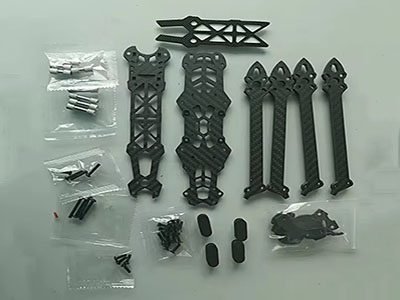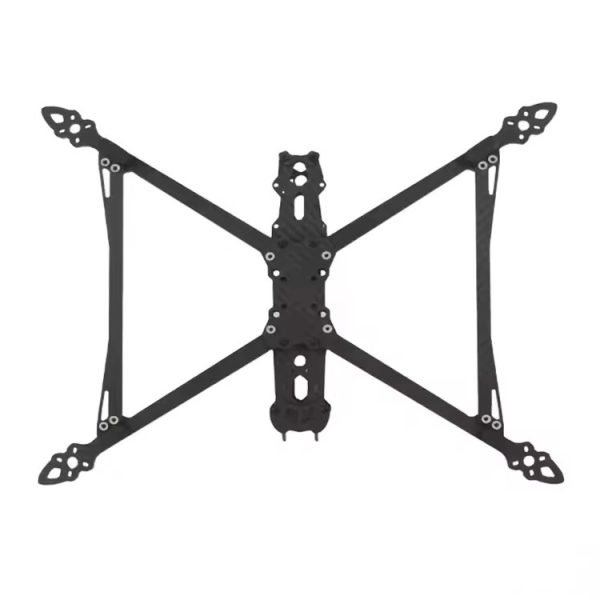What is a FPV drone frame
A FPV drone frame is the structural backbone of a drone. It is the skeleton on which all other part are mounted, and provides protection to all the electronics inside the drone.
Carbon fiber due to the its lightweight and rigid performance, is become the best raw material for drone frame.
A typical FPV drone frame is made of carbon fibre plates and metal hardware, and the structure consist of next part.
1.4x Arms
2.Top and bottom plates
3.Camera mount
4.Standoff
5.Bolts

Carbon fibre is the most popular material for FPV drone frames because:
Low cost: makes it accessible to a broad range of pilots, from beginners to professionals.
Light weight: a lighter racing drone means faster speed, better agility, longer flight time, and less destructive inertia in a crash.
Durable: it can withstand the high stresses and impacts that drones encounter during flights and crashes.
Rigidity: CF has high stiffness to weight ratio. Frame rigidity is important for tuning and flight performance.
Highly customizable: it allows manufacturers to produce frames in various shapes, sizes, and thicknesses to meet the specific needs of different pilots and flying styles.
Carbon fiber is electrically conductive: If you have live wires touching the frame it could cause a short circuit and burn out components.
It can block/attenuate radio frequencies, antennas should be mounted outside of the frame for optimal signal strength.
Here is a table showing roughly what maximum prop size different mini quad frame sizes can support:

Most frames have similar shape and construction, but the FPV drone frame you choose can have noticeable impact on the flight performance of your FPV drone. Not only just weight and aerodynamics, the resonance frequency and rigidity can affect how well the drone can fly.
In recently years the mostly popular style is X frame designs.

“X” frame all the arms intersect at the centre forming an “X” shape, with equal distance between all the motors to the center of the frame. True-X frames tend to have a more neutral handling and balanced behavior on pitch and roll as the motors are contributing equally.
